Related Research Articles

Darius I, commonly known as Darius the Great, was the third King of Kings of the Achaemenid Empire, reigning from 522 BCE until his death in 486 BCE. He ruled the empire at its territorial peak, when it included much of West Asia, parts of the Balkans and the Caucasus, most of the Black Sea's coastal regions, Central Asia, the Indus Valley in the far east, and portions of North Africa and Northeast Africa including Egypt (Mudrâya), eastern Libya, and coastal Sudan.
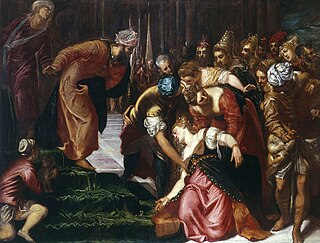
Ahasuerus is a name applied in the Hebrew Bible to three rulers of Ancient Persia and to a Babylonian official first appearing in the Tanakh in the Book of Esther and later in the Book of Tobit. It is a transliteration of either Xerxes I or Artaxerxes I; both are names of multiple Achaemenid dynasty Persian kings.

The Medes were an ancient Iranian people who spoke the Median language and who inhabited an area known as Media between western and northern Iran. Around the 11th century BC, they occupied the mountainous region of northwestern Iran and the northeastern and eastern region of Mesopotamia in the vicinity of Ecbatana. Their consolidation in Iran is believed to have occurred during the 8th century BC. In the 7th century BC, all of western Iran and some other territories were under Median rule, but their precise geographic extent remains unknown.
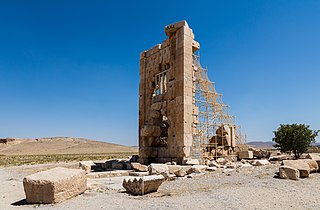
Cambyses I was king of Anshan from c. 580 to 559 BC and the father of Cyrus the Great (Cyrus II), younger son of Cyrus I, and brother of Arukku. He should not be confused with his better-known grandson Cambyses II.
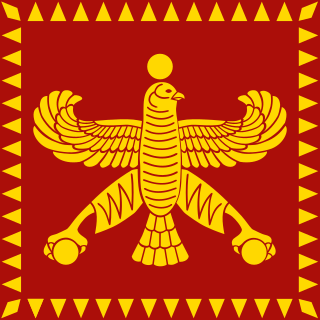
Cyrus II of Persia, commonly known as Cyrus the Great, was the founder of the Persian Achaemenid Empire. Hailing from Persis, he brought the Achaemenid dynasty to power by defeating the Median Empire and embracing all of the previous civilized states of the ancient Near East, expanding vastly and eventually conquering most of West Asia and much of Central Asia to create what would soon become the largest polity in human history at the time. The Achaemenid Empire's largest territorial extent was achieved under Darius the Great, whose rule stretched from Southeast Europe in the west to the Indus River valley in the east.
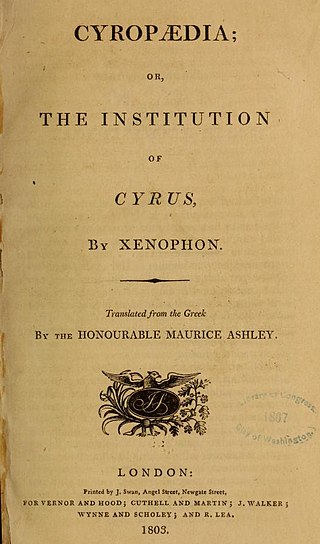
The Cyropaedia, sometimes spelled Cyropedia, is a partly fictional biography of Cyrus the Great, the founder of Persia's Achaemenid Empire. It was written around 370 BC by Xenophon, the Athenian-born soldier, historian, and student of Socrates. The Latinized title Cyropaedia derives from the Greek Kúrou paideía, meaning The Education of Cyrus. Aspects of it would become a model for medieval writers of the genre mirrors for princes. In turn, the Cyropaedia strongly influenced the most well-known but atypical of these, Machiavelli's The Prince, which fostered the rejection of medieval political thinking and development of modern politics.
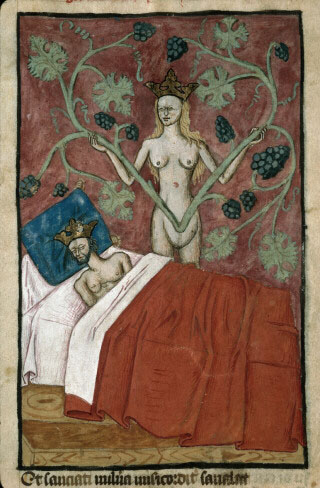
Mandane was a Median princess and, later, the queen consort of the Persian king Cambyses I and the mother of Cyrus the Great, the founder of the Achaemenid Empire. The name likely originates from the Old Iranian *Mandanā-, which means “delighting, cheerful”.
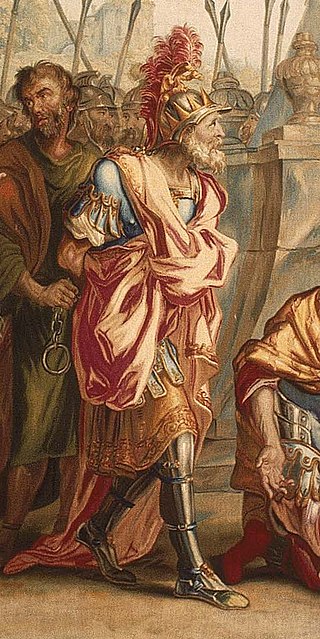
Astyages was the last king of the Median kingdom, reigning from 585 to 550 BCE. The son of Cyaxares, he was dethroned by the Persian king Cyrus the Great.
Harpagus, also known as Harpagos, was a Median general during the 6th century BC, credited by Herodotus as having put Cyrus the Great on the throne through his defection during the Battle of Pasargadae.

Darius the Mede is mentioned in the Book of Daniel as King of Babylon between Belshazzar and Cyrus the Great, but he is not known to secular history and there is no space in the historical timeline between those two verified rulers. Belshazzar, who is often mentioned as king in the book of Daniel, was in fact the crown-prince and governor while his father was in Arabia from ca. 553 to 543 BCE, but Nabonidus had returned to Babylon years before the fall of the Babylonian empire.
The Median dynasty was, according to the ancient Greek historian Herodotus, a dynasty composed of four kings who ruled for 150 years under the Median Empire. If Herodotus' story is accurate, the Medes were unified by a man named Deioces, the first of the four kings who would rule the Median Empire; a mighty empire that included large parts of Iran and eastern Anatolia.

Media is a region of north-western Iran, best known for having been the political and cultural base of the Medes. During the Achaemenid period, it comprised present-day Iranian Azerbaijan, Iranian Kurdistan and western Tabaristan. As a satrapy under Achaemenid rule, it would eventually encompass a wider region, stretching to southern Dagestan in the north. However, after the wars of Alexander the Great, the northern parts were separated due to the Partition of Babylon and became known as Atropatene, while the remaining region became known as Lesser Media.

The Nabonidus Chronicle is an ancient Babylonian text, part of a larger series of Babylonian Chronicles inscribed in cuneiform script on clay tablets. It deals primarily with the reign of Nabonidus, the last king of the Neo-Babylonian Empire, covers the conquest of Babylon by the Persian king Cyrus the Great, and ends with the start of the reign of Cyrus's son Cambyses II, spanning a period from 556 BC to some time after 539 BC. It provides a rare contemporary account of Cyrus's rise to power and is the main source of information on this period; Amélie Kuhrt describes it as "the most reliable and sober [ancient] account of the fall of Babylon."
Cyaxares II was a king of the Medes whose reign is described by the Greek historian Xenophon. Some theories have equated this figure with the "Darius the Mede" named in the Book of Daniel. He is not mentioned in the histories of Herodotus or Ctesias, and many scholars doubt that he actually existed. The question of his existence impacts on whether the kingdom of the Medes merged peacefully with that of the Persians in about 537 BC, as narrated by Xenophon, or was subjugated in the rebellion of the Persians against Cyrus' grandfather in 559 BC, a date derived from Herodotus (1.214) and almost universally accepted by current scholarship.
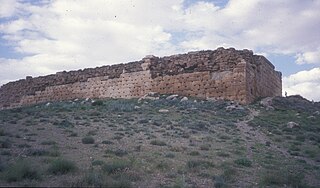
The Medo-Persian conflict was a military campaign led by the Median king Astyages against Persis in the mid 6th-century BC. Classical sources claim that Persis had been a vassal of the Median kingdom that revolted against Median rule, but this is not confirmed by contemporary evidence. After some battles the Persians led by Cyrus the Great emerged victorious, subsequently conquering Median territories and establishing the Achaemenid Empire.
The Battle of Hyrba was the first battle between the Persians and Medians, taking place around 552 BC. It was also the first battle after the Persians had revolted. These actions were led by Cyrus the Great, as he shifted the powers of the ancient near east. The Persian success in the battle led to the creation of Persia's first empire and began Cyrus' decade long conquest of almost all of the known world. Though the only authority with a detailed account of the battle was Nicolaus of Damascus, other well-known historians such as Herodotus, Ctesias, and Strabo also mention the battle in their own accounts.

The fall of Babylon was the decisive event that marked the total defeat of the Neo-Babylonian Empire to the Achaemenid Empire in 539 BC.

The Achaemenid Empire or Achaemenian Empire, also known as the Persian Empire or First Persian Empire, was an Iranian empire founded by Cyrus the Great of the Achaemenid dynasty in 550 BC. Based in modern-day Iran, it was the largest empire by that point in history, spanning a total of 5.5 million square kilometres. The empire spanned from the Balkans and Egypt in the west, most of West Asia, the majority of Central Asia to the northeast, and the Indus Valley to the southeast.
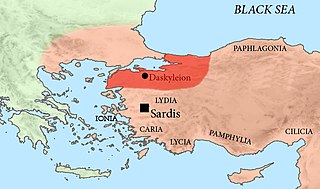
Mitrobates ; was an Achaemenid satrap of Daskyleion under the reigns of Cyrus the Great, who nominated him for the role, and Cambyses. After Cambyses died, and during the struggles for succession that followed, he is said to have been assassinated, together with his son Cranaspes, by the neighbouring satrap of Lydia, Oroetes, who wanted to expand his Anatolian territories. After the assassination, Oroetes added the territory of Hellespontine Phrygia to his own.
After Cambyses had died and the Magians won the kingship, Oroetes stayed in Sardis, where he in no way helped the Persians to regain the power taken from them by the Medes, but contrariwise; for in this confusion he slew two notable Persians, Mitrobates, the governor from Dascyleium, who had taunted him concerning Polycrates, and Mitrobates' son Cranaspes; and besides many other violent deeds, when a messenger from Darius came with a message which displeased him, he set an ambush by the way and killed that messenger on his journey homewards, and made away with the man's body and horse. So when Darius became king he was minded to punish Oroetes for all his wrongdoing, and chiefly for the killing of Mitrobates and his son.
References
- Max Duncker, The History of Antiquity, tr. Evelyn Abbott. London, Richard Bentley & Son (1881). OCLC 499438104
- Anderson Edward, Robert, The Story of Extinct Civilizations of the East, Published by McClure, Phillips, (1904). OCLC 3851695
- Fischer, W.B., Ilya Gershevitch, and Ehsan Yarshster, The Cambridge History of Iran, Cambridge University Press (1993). In 1 volume. ISBN 0-521-20091-1
- Chisholm, Hugh, The Encyclopædia Britannica: A Dictionary of Arts, Sciences, Literature and General Information, Cambridge, England; New York: At the University Press, (1910). OCLC 65665352
- Laymon, Charles M., The Interpreter's One Volume Commentary on the Bible: Introduction and Commentary, Abingdon Press, (1971). ISBN 0-687-19299-4
- Clare, Israel Smith. The unrivaled history of the world, containing a full and complete record of the human race from the earliest historical period to the present time, embracing a general survey of the progress of mankind in national and social life, civil government, religion, literature, science and art... Chicago, The Werner Co., (1893). OCLC 2791262
